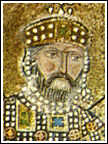
Byzantium (Eastern Roman Empire):

| Constantine IX Monomachos (ca 980-1042-1055). Completely uninteresting, according to Gibbon. The whole picture. |
Denmark:
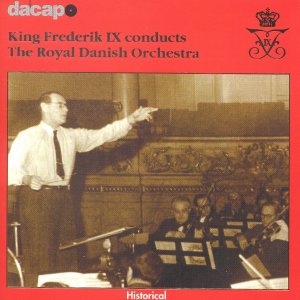
|
Christian IX (1818-1863-1906). Frederik IX (1899-1972) conducting the Royal Danish Orchestra (left). From The Copenhagen Post |
Dune
Padishah Emperor Elrood Corrino IX,
a character from Frank Herbert's Dune
universe, actally of the prequel written
by Brian Herbert and Kevin J. Anderson. See
http://en.wikipedia.org/wiki/Elrood_Corrino_IX.
From Wikipedia, the free encyclopedia.
Egypt see
Egypt site
, Egyptian kings
Ramesses IX (Neferkaresetepenre) 1126-1108 B.C. 20th Dynasty
Ptolemy IX Soter II (Lathyros) 116-107 & 88-80 B.C. Ptolemaic Dynasty
England: it seems that, after Henry VIII, nobody wanted a IXth
king in this wise country. Ah, Edward VIII, hmmm.
France:
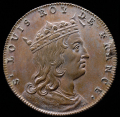
| Louis IX (1214-1226-1270), considered as a high Christian figure. Organized two disastrous crusades. |

| Charles IX (1550-1560-1574) only known for allowing the Saint-Barthélemy massacre in 1572. |
Spain:
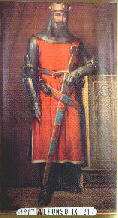
| Alfonso IX, king of Leon, 1171(?)-1230.
See Leon site.
He fought against Alfonso VIII, who was not his father but the king
of Castile. Later on, he succeeded in reuniting Castile and Leon.
He founded the university of Salamanca in 1218.
His daughter Blanche of Castile was the mother of Louis IX
of France, yes, the same Louis IX we already saw above.
The most interesting guy of the whole lot, if you ask me (OK, I admit that Frederik IX of Denmark was a better orchestra conductor). |
Sweden: Erik IX, 1120-1159. Charles IX, 1550-1604-1611.
Syria:
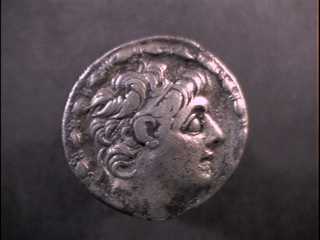
| Antiochus IX Kyzikenos, 113-95 BC. |
Thailand:

| Rama IX (Bhumibol), born 1927, king in 1946. Seen here as the president of Thailand's Red Cross. |
John IX (?-898-900),
Stephen IX (?-939-942),
Benedict IX, born ca 1010, put in charge in 1032, resigned (for money)
in 1045, changed his mind and was again in charge in 1047, finally
fired in 1048. He probably died in the 1050's.
St Leo IX (1002-1049-1054) Quite the contrary type: he strongly
reformed the church.
Gregory IX (ca. 1170-1241), pope from 1227 onward.
He had all these troubles with Frederick II, "stupor mundi",
a formidable pagan!
Boniface IX (1355-1389-1404)
Innocent IX (1591-Oct. 29, 1591-Dec. 30 1591)
Clement IX (1600-1667-1669)

| Pius IX (1792-1846-1878: history's longest papacy), had to suffer unwanted aggiornamento under the risorgimento. |
|
|
Esteban Buch:
Beethoven's Ninth,
ISBN: 0226078248,
University of Chicago Press,
(Paperback, May 2004),
Pages: 327
http://books.google.com/books?vid=ISBN0226078248 Who hasn't been stirred by the strains of Beethoven's Ninth Symphony? That's a good question, claims Esteban Buch. German nationalists and French republicans, communists and Catholics have all, in the course of history, embraced the piece. It was performed under the direction of Leonard Bernstein at a concert to mark the fall of the Berlin Wall, yet it also serves as a ghastly and ironic leitmotif in Stanley Kubrick's "A Clockwork Orange. Hitler celebrated his birthdays with it, and the government of Rhodesia made it their anthem. And played in German concentration camps by the imprisoned, it also figured prominently at Mitterand's 1981 investiture. In his remarkable history of one of the most popular symphonic works of the modern period, Buch traces such complex and contradictory uses--and abuses--of Beethoven's Ninth Symphony since its premier in 1824. Buch shows that Beethoven consciously drew on the tradition of European political music, with its mix of sacred and profane, military and religious themes, when he composed his symphony. But while Beethoven obviously had his own political aspirations for the piece--he wanted it to make a statement about ideal power--he could not have had any idea of the antithetical political uses, nationalist and universalist, to which the Ninth Symphony has been put since its creation. Buch shows us how the symphony has been "deployed" throughout nearly two centuries, and in the course of this exploration offers what was described by one French reviewer as "a fundamental examination of the moral value of art." Sensitive and fascinating, this account of the tangled political existence of a symphony is a rare book that shows the life of an artworkthrough time, shifted and realigned with the currents of history. |
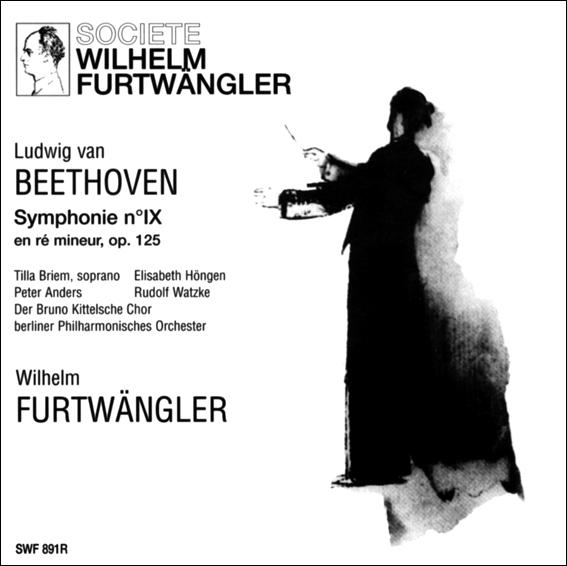
| The incredible Furtwängler performance of March 1942, between hell and heaven. SWF 891R, Beethoven 9░ Symphonie (Briem, H÷ngen, Anders, Watzke), 21.III.1942 |
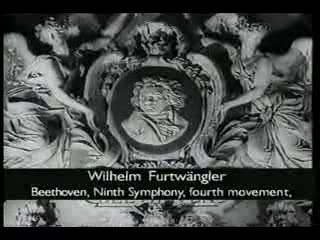
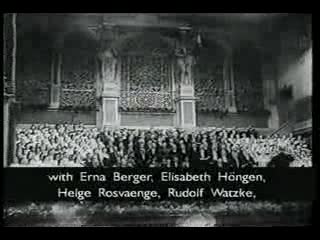
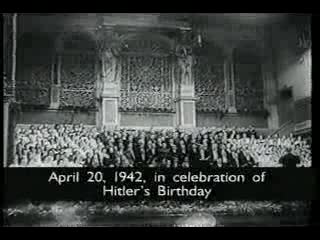
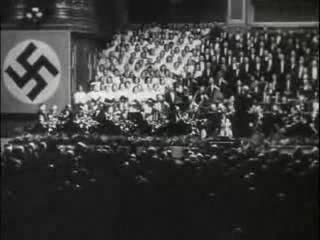

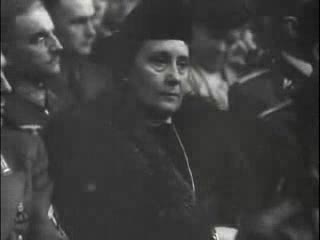
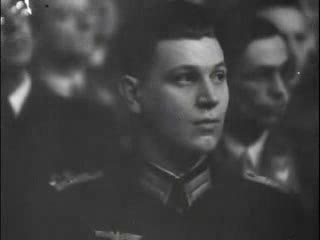
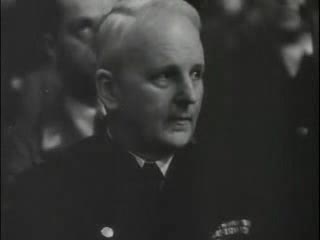
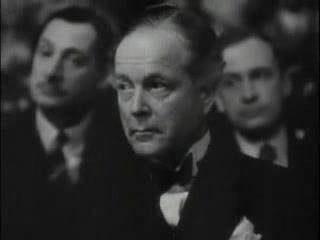

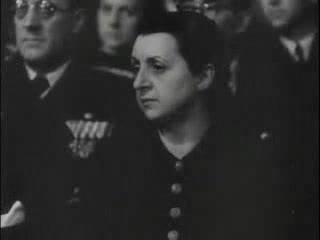



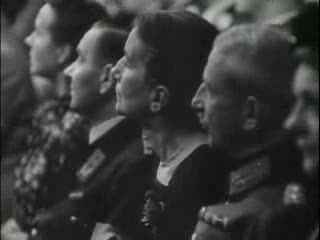




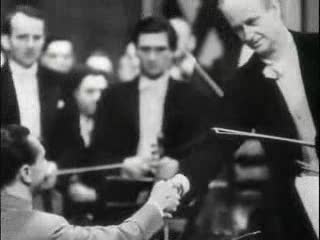
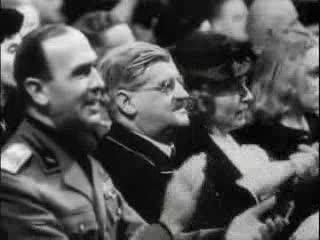
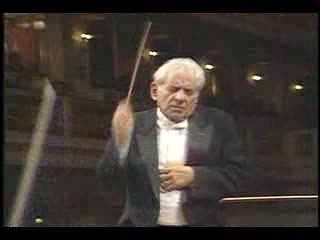
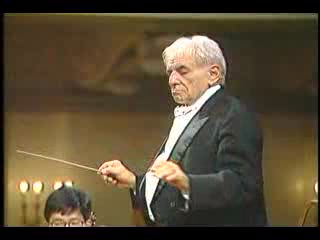
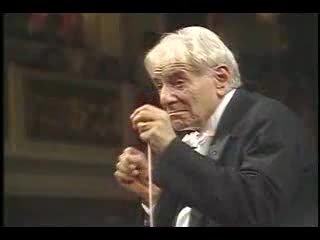
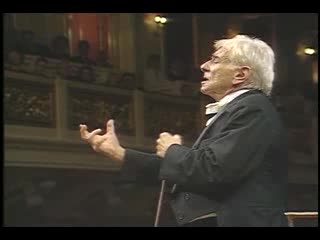
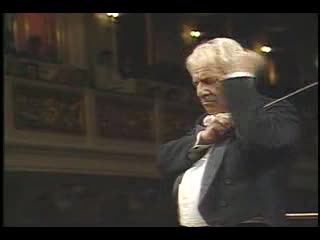
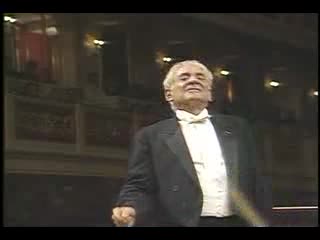
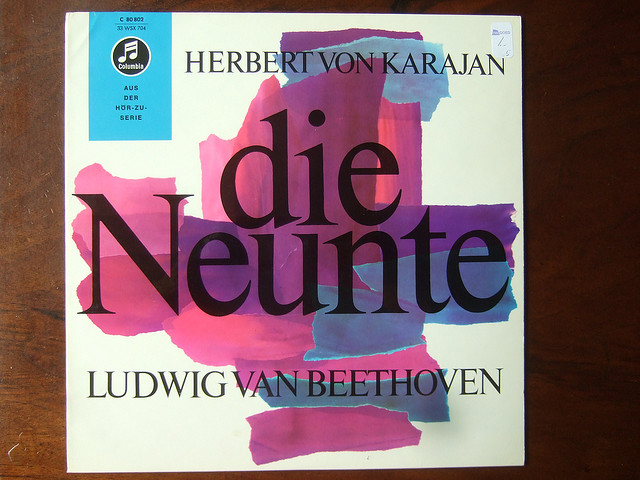
| Karajan, 1955, Symphony No 8, Symphony No 9 (Schwarzkopf, Hoffgen, Haefliger, Edelmann, London Philharmonia Orchestra with the Wiener Singverein), EMI Columbia - C 90 515/516 |
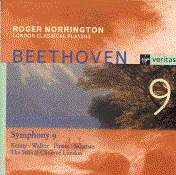
| Here, a record under R. Norrington |
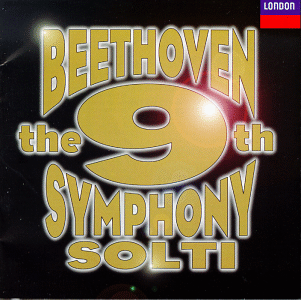
| Best (from my point of view) record cover: Sir Georg Solti, with Jessye Norman, Reinhild Runkel, etc., the Chicago Symphony chorus, and the Chicago Symphony orchestra, Uni/London classics, 1995. |
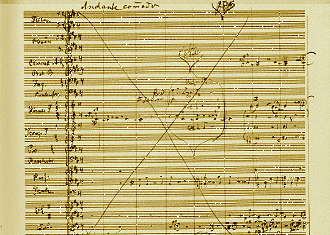
|
Then the ninth symphony became a kind of last frontier, with
Schubert (the "Great"), Mahler, and Bruckner.
Left: score of Mahler's ninth (http://octopus.homeunix.net/homepages/jens/musik/ mahler/sinfonie9.html) |
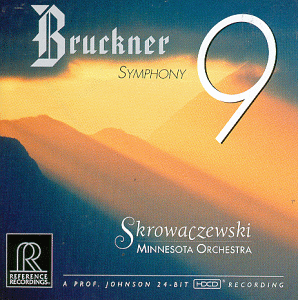
|
Now, that's a beautiful record cover!
(S. Skrowaczewski conductiong the Minnesota Orchestra)
|
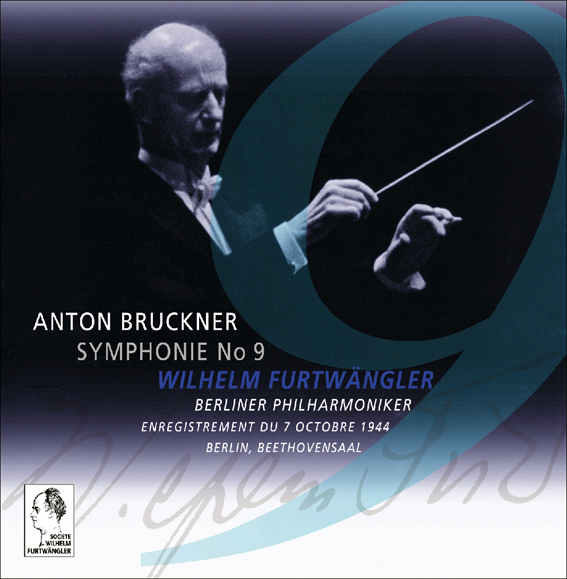
|
And this one, Furtwängler in 1944.
However, Mahler and Bruckner did already indulge in gigantic
constructions well before their ninth symphonies.
And Beethoven, Schubert, and Mahler started tenth symphonies.
|
|
Sir Malcolm Arnold's Symphony No. 9 Ludwig van Beethoven's Symphony No. 9, Choral Havergal Brian's Symphony No. 9 Anton Bruckner's Symphony No. 9, sometimes referred to as dem lieben Gott David Diamond's Symphony No. 9 AntonÝn Dvorßk's Symphony No. 9, From the New World Joseph Haydn's Symphony No. 9 Michael Haydn's Symphony No. 9 Hans Werner Henze's Symphony No. 9 Alan Hovhaness's Symphony No. 9 Gustav Mahler's Symphony No. 9 |
Darius Milhaud's Symphony No. 9 Wolfgang Amadeus Mozart's Symphony No. 9 Nikolai Myaskovsky's Symphony No. 9 Edmund Rubbra's Symphony No. 9, The Resurrection Franz Schubert's Symphony No. 9, Great William Schuman's Symphony No. 9 Roger Sessions's Symphony No. 9 Dmitri Shostakovich's Symphony No. 9 Robert Simpson's Symphony No. 9 Ralph Vaughan Williams's Symphony No. 9 |
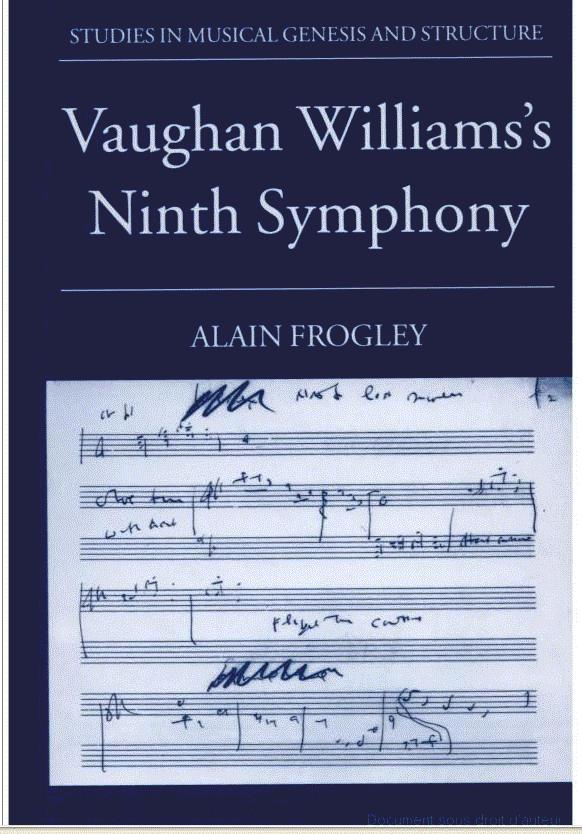
|
Later symphonists did not feel anything special at the ninth
item. Dvorak's 'New World' is the ninth only because a new numbering;
Shostakovich (but see "curse of the nintn" above) and Malipiero's ninths are not especially
remarkable. However, Vaughan Williams's ninth did inspire this work: Alain Frogley, Vaughan Williams's Ninth Symphony, Oxford University Press , 2001. "This study, the first of its kind on a work of Vaughan Williams, traces the genesis of the composer's enigmatic final symphony as documented in the surviving manuscripts. The latter reveal an underlying program based on Hardy's Tess of the D'Urbervilles, and chart the composer's struggle to find the technical means by which to realize his most complex spiritual vision." |
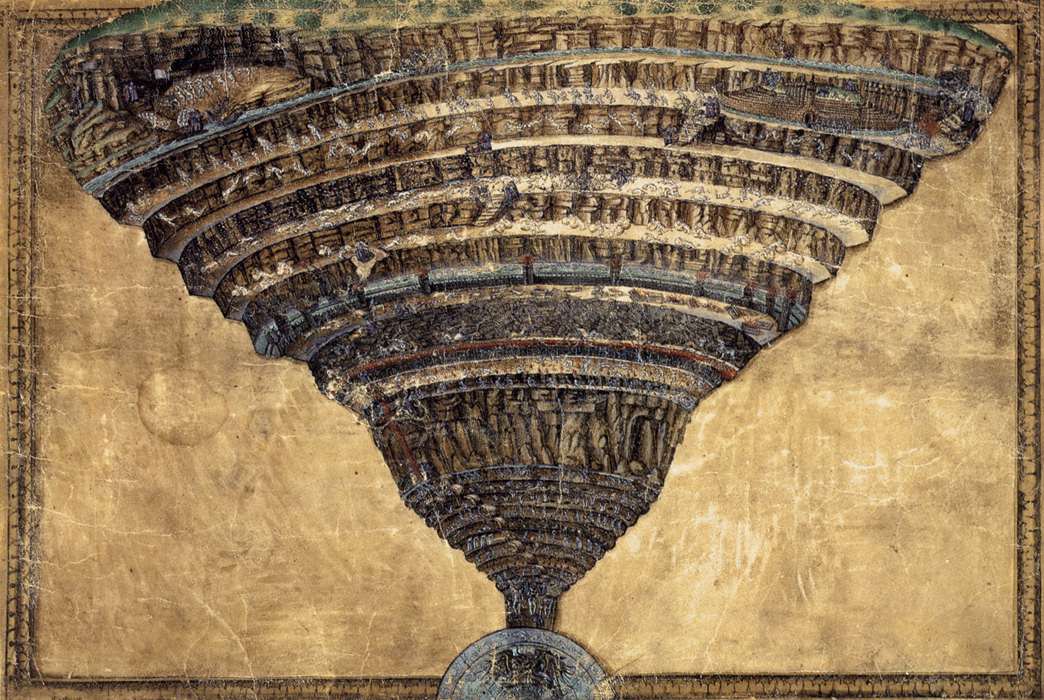 Botticelli's picture of Hell.
Botticelli's picture of Hell.
Well, today we would consider massmurderers to deserve the lowest
pit of the Inferno, but not so with Dante. I especially appreciate that
the colours of the three dog heads
| http://it.wikisource.org/wiki/Divina_Commedia/Inferno/Canto_XXXIV |
http://en.wikisource.org/wiki/The_Divine_Comedy/Inferno/Canto_XXXIV |
| translated by Henry Wadsworth Longfellow | |
| Oh quanto parve a me gran maraviglia | O, what a marvel it appeared to me, |
| quand′io vidi tre facce a la sua testa! | When I beheld three faces on his head! |
| 39 L′una dinanzi, e quella era vermiglia; | The one in front, and that vermilion was; |
| l′altr′eran due, che s′aggiugnieno a questa | Two were the others, that were joined with this |
| sovresso ′l mezzo di ciascuna spalla, | Above the middle part of either shoulder, |
| 42 e sé giugnieno al loco de la cresta: | And they were joined together at the crest; |
| e la destra parea tra bianca e gialla; | And the right-hand one seemed 'twixt white and yellow; |
| la sinistra a vedere era tal, quali | The left was such to look upon as those |
| 45 vegnon di là onde ′l Nilo s′avvalla. | Who come from where the Nile falls valley-ward. |
From Woody Allen's "Deconstructing Harry":
Floor five... muggers, aggressive panhandlers and bookcritics.
Floor six... right wing extremists, killers, lawyers who appear on TV.
Floor seven... the media. Sorry, that floor is all filled up.
Floor eight... escaped war criminals, TV evangelists and the NRA.
Lowest level... everybody off.
...
It's finished. Let him go to heaven, please.
I'm a Jew! We don't believe in heaven.
-Where do you want to go? -To a Chinese restaurant.
etc.
 where Ahab is the first Biblical character
found in nonbiblical writings, and the ninth A.D., from 801 to 900.
The second one is
the century of Charlemagne (Carolus Magnus), whose
where Ahab is the first Biblical character
found in nonbiblical writings, and the ninth A.D., from 801 to 900.
The second one is
the century of Charlemagne (Carolus Magnus), whose